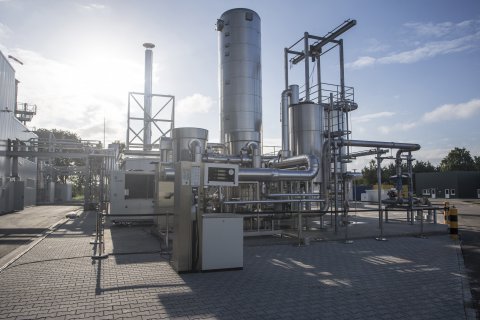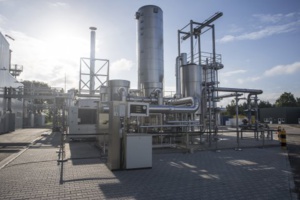It should be noted that the company Audi has long been engaged in the development of technologies for the production of different types of fuel from the carbon dioxide in the framework of the developed concepts power-to-liquid (PtL). "The widespread use of CO2 as a feedstock for fuel production is of great importance in protecting the climate, ecological environment and save natural resources of our planet. In the near future, such technologies should be the basis of the economy, focused on environmental cleanliness" - writes the company Audi in the statement.
According to available information, the Dresden chemical factory Audi only uses energy derived from environmentally friendly sources of energy. At this stage, most of the work required for the carbon dioxide comes from the nearby businesses biochemical industry, but rather a significant portion is allocated directly from the atmosphere by using technologies developed by the Swiss company Climeworks. In the near future, the share of carbon dioxide extracted from air, will increase until the entire plant will go completely to use it.
The process used to convert carbon dioxide fuel rather complicated, it involves heating water to 800 degrees Celsius, which turns it into a superheated steam, and using high-temperature electrolysis to split water into hydrogen and oxygen. This process is more efficient than other methods of splitting water, which allows to raise the overall efficiency of converting electrical energy into chemical energy of hydrogen to a level of 70 percent.
Thereafter, the resultant hydrogen is reacted with carbon dioxide to form a mixture of liquid hydrocarbons, a kind of the raw material called "blue crude". This raw material can be converted into synthetic diesel fuel through secondary chemical transformations, synthetic fuel or jet fuel.
The construction of an experienced chemical production in Dresden started in May 2012 with the support of the Ministry of Education and Research of Germany and ended November 14, 2014. Currently, chemical plant cannot boast high performance, it is able to produce about 3 million liters of fuel per month. But this plant originally is not built to produce fuels in large amounts, it is a kind of polygon, which are processed on existing and emerging technologies are tested conversion of carbon dioxide and energy in different types of liquid fuels.
- We develop synthesis e-diesel technology that can be used for other types of fuel. We first tested and introduced the production technology we have in Germany, but then we will share them with the whole rest of the world" - says Reiner Mangold , head of Audi, develops technologies of synthetic fuel.
According to available information, the Dresden chemical factory Audi only uses energy derived from environmentally friendly sources of energy. At this stage, most of the work required for the carbon dioxide comes from the nearby businesses biochemical industry, but rather a significant portion is allocated directly from the atmosphere by using technologies developed by the Swiss company Climeworks. In the near future, the share of carbon dioxide extracted from air, will increase until the entire plant will go completely to use it.
The process used to convert carbon dioxide fuel rather complicated, it involves heating water to 800 degrees Celsius, which turns it into a superheated steam, and using high-temperature electrolysis to split water into hydrogen and oxygen. This process is more efficient than other methods of splitting water, which allows to raise the overall efficiency of converting electrical energy into chemical energy of hydrogen to a level of 70 percent.
Thereafter, the resultant hydrogen is reacted with carbon dioxide to form a mixture of liquid hydrocarbons, a kind of the raw material called "blue crude". This raw material can be converted into synthetic diesel fuel through secondary chemical transformations, synthetic fuel or jet fuel.
The construction of an experienced chemical production in Dresden started in May 2012 with the support of the Ministry of Education and Research of Germany and ended November 14, 2014. Currently, chemical plant cannot boast high performance, it is able to produce about 3 million liters of fuel per month. But this plant originally is not built to produce fuels in large amounts, it is a kind of polygon, which are processed on existing and emerging technologies are tested conversion of carbon dioxide and energy in different types of liquid fuels.
- We develop synthesis e-diesel technology that can be used for other types of fuel. We first tested and introduced the production technology we have in Germany, but then we will share them with the whole rest of the world" - says Reiner Mangold , head of Audi, develops technologies of synthetic fuel.






